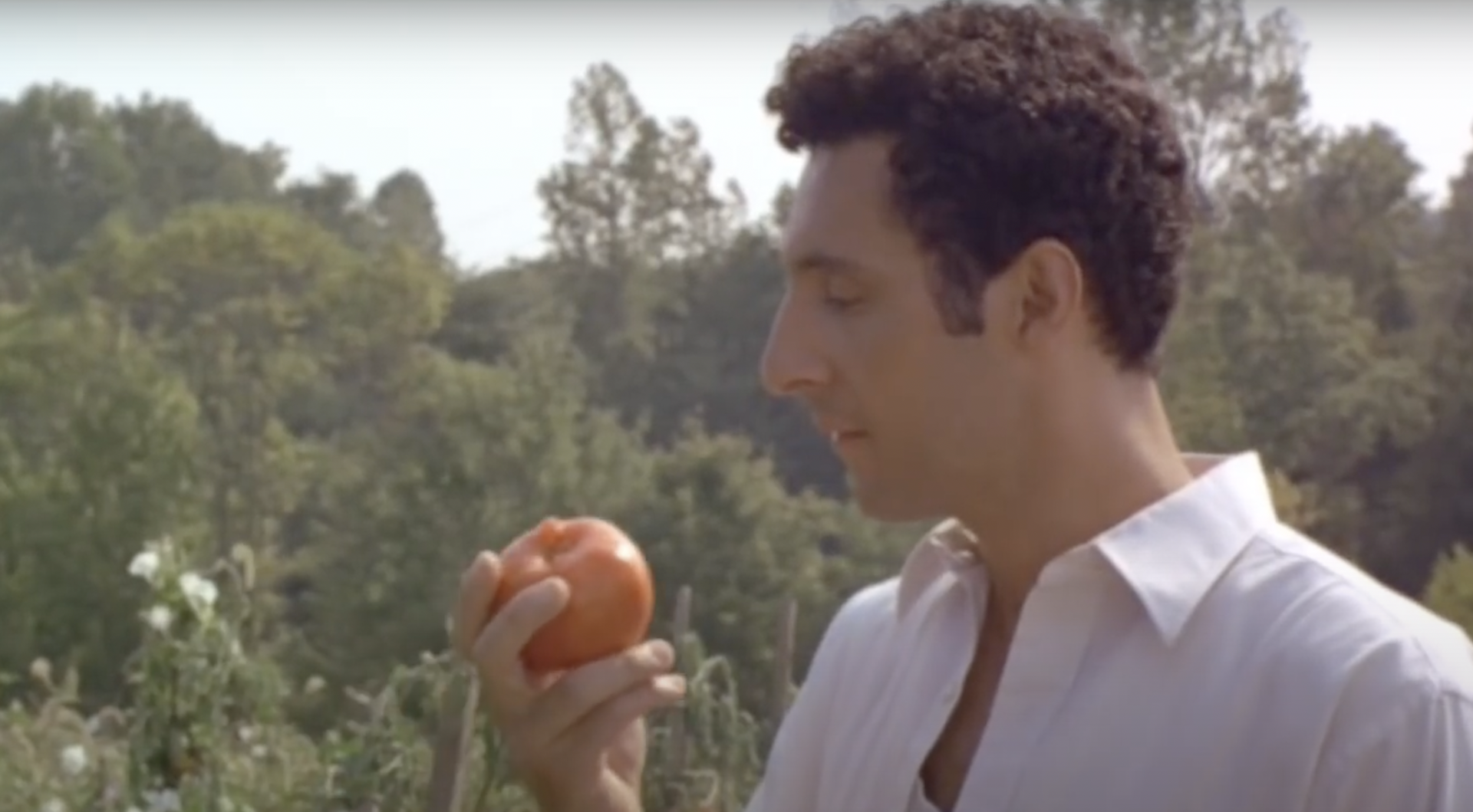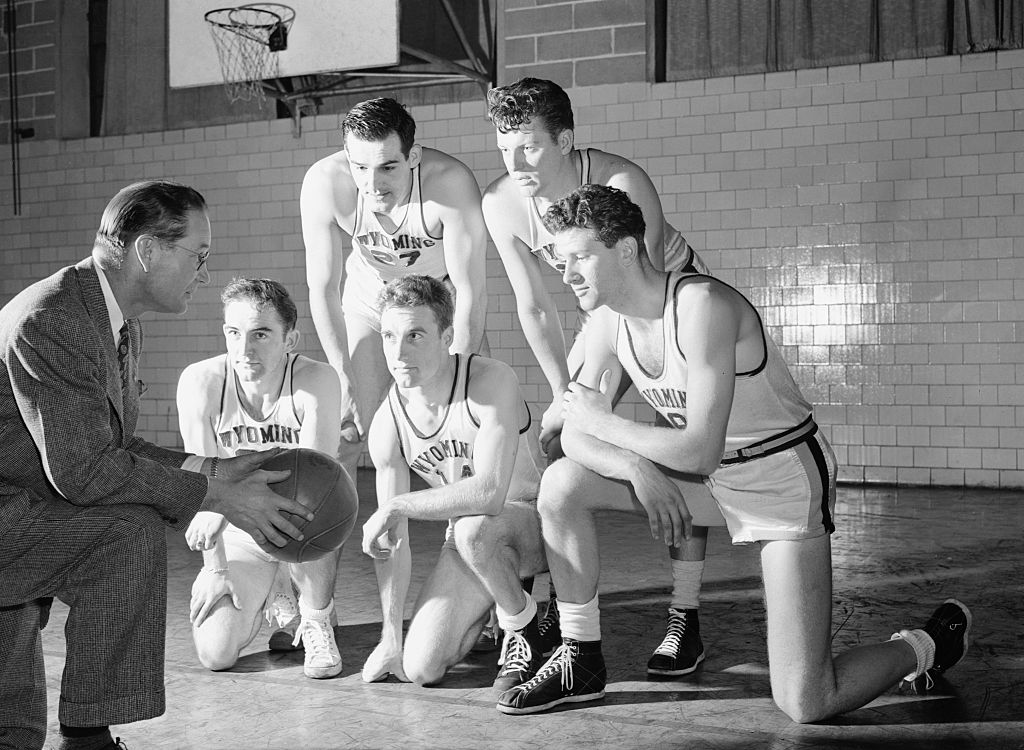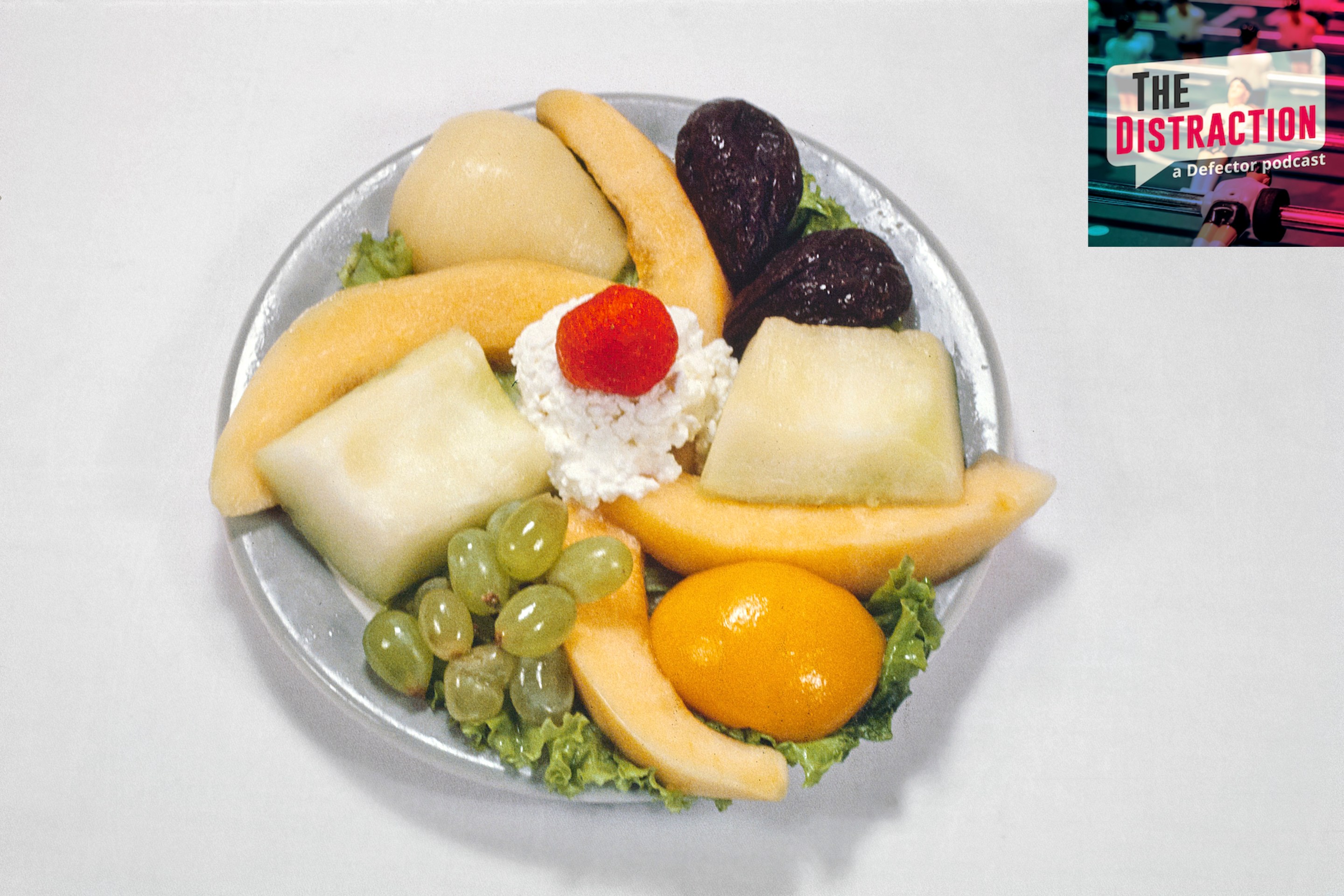I can’t stop thinking about the fact that in 1995 it was possible to land a so-called “micro-tight” budget of $6 million (in today’s money) to shoot a meandering movie in 35 days on location in Knoxville, Tenn., about a guy finding his first gray hair. Director Tom DiCillo has been open about the difficulty of making Box of Moonlight, in which John Turturro plays Al Fountain, an uptight engineer whose mid-life crisis causes him to go “off the grid,” away from his family and, in the empty time in between, to briefly acquire a new one in Sam Rockwell’s forest-dwelling man-child, Bucky (“The Kid”). It was so hard to get this film off the ground that DiCillo shot another one in the middle of it literally about the difficulty of filmmaking (Living in Oblivion). But, ultimately, it was still possible to make this rambling ode to, in DiCillo’s words, “finding where the rituals of today are, the rituals that make you look at yourself and the people around you and say, ‘I value that.’”
Box of Moonlight premiered in 1996, the same year as Nicole Holofcener’s first film, Walking and Talking (budget: $1.8 million today), which also features Catherine Keener, who memorably shows up in Moonlight as a failed sex phone operator, and is about two best friends diverging. Wes Anderson’s debut, Bottle Rocket, (budget: $9 million today) also came out in 1996 and is kind of also about two best friends diverging. All that to say it was a good year for independent films. A formative year. For me, anyway. When I think of films, when I think of loving films, it’s still those kinds of films, films about low-key lives at human-sized crossroads.
Box of Moonlight opens on an aerial shot sailing over a twangy tune across a gorgeous landscape of rolling green hills and rippling waters, the kind of place you might expect to see a latter-day Huck Finn casting a lazy line. But the shot of the bucolic landscape ends up on a decoy deer—Al will later be tricked by this deer—already opening on a false promise. Beyond this is the pop-up factory where Al is keeping an iron grip on his staff who are installing the power for a windshield wiper assembly line. In his Quality Inn hotel room, his identical shirts and pants all lined up, Al fantasizes about befriending these guys who hate him when he suddenly finds in his mass of black hair, one single gray curl. This lone hair floats along an atonal jazzy score, as Al suddenly starts to see everything going backwards—cups of coffee emptying back into the pot, glasses of water back into the jug.
Spurred on by the team’s contract abruptly being called off, Al decides to drop out of his life without telling his wife (and the kid he rides like his employees). He gets a car from the aptly named Circle Rent-a-Car and his first stop is the old lake with the big slide he used to visit with his family as a child, perhaps the last time he really flew. Of course, he finds it in ruins (fittingly filled with formaldehyde), and, right after that, like a sign from God—he did bump into a preacher at the lake—Al nearly smashes into Bucky, a 20-something who looks and kind of acts like a much younger child, living in a trailer open to the elements, eating cookies for breakfast, stealing lawn ornaments for a living and being oddly disconnected from the rest of the town. Someone on Letterboxd simply wrote as a review, “manic pixie dream girl sam rockwell,” and it’s true; in the end the kid helps the grown-up fly again, but the grown-up also grounds the kid, the missing parts of each of them in some ways finally filled in.
I first saw Box of Moonlight in my last year of high school. I was 18. I can’t remember what I thought of it exactly. I remember the VHS cover in the video store being appealingly simple: a naked Turturro holding a big, cracked clock upside down (“Some people have a hard time unwinding”) but basically the rest of it white space. Clearly a movie about a man untethered. I remember images: that hair falling to the bathroom floor, the kid riding his bicycle backwards, Turturro’s crooked smile in his crisp white shirt, Rockwell in that Davy Crockett hat acting the way Rockwell acts, which DiCillo likened to Woody Woodpecker. And, of course, the banal aphorisms that Al proudly comes up with every so often—“Life is a tomato right off the vine. Al Fountain - Monday, July 2, 4:32 p.m.”—those were the parts I repeated over and over.
I’m trying to get back into the headspace of that 18-year-old to understand what exactly it was that struck her about this film centered on a man closer to her father’s age breaking himself out of his “squared away” existence. It was the pared down nature of it all, the languor hiding the quiet rumble of unrest beneath. At the time, I was thinking about the future and orienting myself to that end—getting serious, studying hard. Childhood carelessness had already been strangled, the air taken up instead by adult expectations that felt impossible to meet. And so perhaps it was that notion of a planned-out, stable life that didn’t quite fit that struck me like a warning—a latent alarm system beeping intermittently at the back of my psyche.
Over time, like some missive from the past, DiCillo’s film would occasionally resurface in my life. Whenever anyone asked about my favorite films, it would always be somewhere in there, like a secret I knew I had to hang on to: “Have you seen Box of Moonlight?” The answer was often no. Occasionally a yes, but never a yes as tangled up as mine. That’s kind of how it floated back into my consciousness recently, like the distant name of an old classmate suddenly clear on your tongue.
I was heading to a writing residency where I had planned to write an admittedly squared away story about train travel in Canada, but then I got on the train, and something happened. It wasn’t a gray hair, or a blind curve, but it wasn’t not that. Suddenly I felt my age acutely, and that little glinting curl floated into view. So I rewatched Box of Moonlight, the mid-life crisis movie I am not sure I would have called a mid-life crisis movie at 18. And I saw it from the other side. I saw the theme of modern artifice. “That pie almost looks homemade dudn’t it,” says a waitress at the local diner, which, like Circle Rent-a-Car, was given an intentionally retro look to make it appear timeless but also synthetic. And I saw all of this plasticness butting up against the untouched nature around it. “I just loved the rolling hills and the woods, and the green pastures,” DiCillo said on set all those years ago, just slightly younger than I am now. “It seemed to me to evoke an America slightly primeval, before the Europeans came.” Reduced by some critics at the time to nothing more than a hippy fantasy, I saw Box of Moonlight this time around as a movie about a man realizing he is still alive within the calcified existence he has fashioned for himself. “I kept going back to the image of the box,” DiCillo told Salon, “that Al is living in the box, and let’s have Kid blow the walls off the box.”
At the end of the film, Al is in the midst of a drug trip, fireworks going off in the background on the Fourth of July. His mind is going over all that backwards stuff and suddenly he lands on that gray hair. Oh, his face says. Oh! “It’s me! I am doing it!" he exclaims. “I am trying to stop time!” And instead of fighting it, he reaches across it. He peers through the flames of the bonfire around which he and The Kid are dancing, just as his son peers through the flames of the fireworks his dad finally agrees to bring home, and time collapses—father and son, one and the same, old is young, young is old, time doesn’t matter, only this moment does. “Just a little drive, that’s all. Taking a drive down the road. Life is a drive, down the road. Al Fountain - Saturday, June 30th, 9:55 a.m.”






